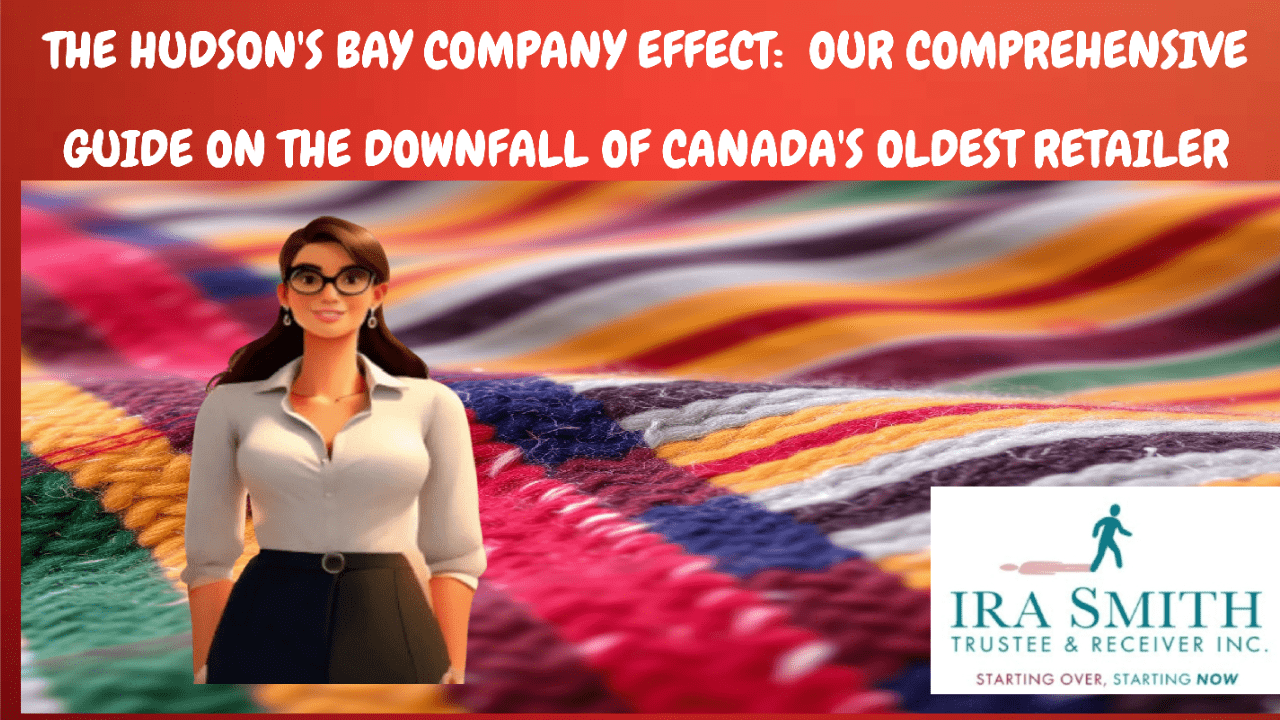History of the Hudson’s Bay Company
Hudson’s Bay Company has a fascinating rich history stretching over 350 years. This makes it one of North America’s oldest companies and a significant part of Canadian heritage. Understanding its past helps us make sense of its current challenges.
Establishment in the 17th Century
The Hudson’s Bay Company (HBC) began in 1670 when King Charles II of England granted a royal charter to “The Governor and Company of Adventurers of England trading into Hudson’s Bay.” This charter gave the company exclusive trading rights over the Hudson Bay watershed, an enormous territory that would later become much of Canada.
The company was started by two French fur traders, Pierre-Esprit Radisson and Médard des Groseilliers, who convinced English investors that Hudson Bay provided the perfect route for accessing the rich fur resources of North America. The first trading post, Charles Fort (later York Factory), was established at the mouth of the Nelson River.
Unlike other businesses of that time, Hudson’s Bay Company was given remarkable powers. It could make laws, administer justice, build forts, and even wage war if necessary. The company essentially functioned like a government in its territory, often called “Rupert’s Land” after Prince Rupert, the company’s first governor.
Early Relationships with Indigenous Peoples
Hudson’s Bay Company couldn’t have survived without forming relationships with Indigenous peoples. The company relied heavily on First Nations and Inuit communities for both fur supplies and survival knowledge in the harsh northern climate.
Trading relationships developed quickly. Indigenous trappers would bring beaver pelts and other furs to HBC trading posts, exchanging them for European goods like metal tools, weapons, cooking pots, blankets, and beads. These trading partnerships became the foundation of the company’s success.
The company developed a standardized trading system using “Made Beaver” as currency – one prime beaver pelt became the unit against which all other trades were measured. This system helped bridge cultural and language differences between European traders and Indigenous peoples.
However, these relationships weren’t always balanced. The introduction of European diseases devastated many Indigenous communities, and increasing dependency on European goods gradually changed traditional ways of life. The company’s presence began the process of colonization that would dramatically transform the land now known as Canada.
The Fur Trade Era and Competition
For nearly 150 years, Hudson’s Bay Company operated with minimal competition in its chartered territory. The company’s strategy was to build trading posts along the coast of Hudson Bay and have Indigenous trappers bring furs to them, rather than sending traders inland.
This comfortable position changed dramatically in the late 1700s when the North West Company emerged as a fierce competitor. The Montreal-based North West Company sent its voyageurs and coureurs des bois (forest runners) deep into the interior to trade directly with Indigenous communities, threatening HBC’s business model.
The rivalry between these companies became intense and sometimes violent. To compete, Hudson’s Bay Company was forced to expand inland, establishing trading posts throughout the territory. This competition led to the rapid exploration of western and northern Canada as both companies raced to claim new trading areas.
By the early 1800s, the fur trade was becoming less profitable due to changing European fashion trends and depleted beaver populations. After years of costly competition, the two companies merged in 1821, keeping the Hudson’s Bay Company name but adopting many North West Company practices.
This merger marked the beginning of a new era for Hudson’s Bay Company. The company would gradually transform from a fur trading enterprise into a retail giant, eventually establishing the department stores that many Canadians know today. This evolution shows how Hudson’s Bay has reinvented itself before – an important reminder as the company faces its current challenges.
Hudson’s Bay Company: Evolution of the Organization
After establishing itself as a dominant force in the fur trade, Hudson’s Bay Company faced many changes. The company had to transform multiple times throughout its long Canadian history to stay relevant. These changes reflect broader economic and social shifts in Canadian society.
19th Century Adaptations
By the mid-1800s, the fur trade was declining. Beaver hats were going out of fashion in Europe, and fur resources were becoming depleted in many areas. Hudson’s Bay Company needed to find new ways to make money.
The company began diversifying its business activities. It started selling a wider range of goods to settlers who were moving into western Canada. Items like food supplies, farming equipment, household goods, and clothing became increasingly important parts of HBC’s business.
A major turning point came in 1869-1870 when Hudson’s Bay Company sold Rupert’s Land to the new Dominion of Canada for £300,000 (about $1.5 million at that time). While the company kept its trading posts and some land around them, it gave up the governing powers it had held for two centuries.
This sale changed Hudson’s Bay Company from a quasi-governmental organization to a more conventional business. The company used some of this money to modernize its operations and expand its retail activities, opening larger stores in growing prairie communities like Winnipeg and Calgary.
Transportation improvements also forced the company to adapt. As railways spread across Canada in the late 19th century, HBC’s traditional water routes became less important. The company had to relocate many of its posts to be closer to railway lines, changing patterns that had existed for generations.
Shift from Colonial to Corporate Responsibilities
Hudson’s Bay Company’s evolution from a colonial enterprise to a modern corporation involved significant changes in how it operated and what responsibilities it held.
For its first 200 years, HBC functioned almost like a government in much of what is now Canada. It made laws, settled disputes, and controlled trade across a vast territory. The company even issued its currency at times. These colonial-style powers made it unlike most modern businesses.
When Canada purchased Rupert’s Land, HBC had to redefine itself. It could no longer rely on special privileges granted by a royal charter. Instead, it had to compete with other businesses on more equal terms.
This transition wasn’t always smooth. The company struggled to adapt its management structure, which had been designed for the fur trade, to work effectively in retail. Old practices sometimes clash with new business realities.
By the early 20th century, Hudson’s Bay Company was transforming into a department store chain. In 1912, the company began constructing large, impressive Canadian department stores in major cities. These “flagship” stores became landmarks, and some still stand today.
The company also had to change how it related to its employees. In the fur trade era, many workers were isolated at remote posts and completely dependent on the company. Modern retail stores required different labour practices and relationships with urban employees who had other options for employment.
Throughout this period, Hudson’s Bay maintained some of its historical trading posts while simultaneously building modern department stores. This dual identity – part historical institution, part modern retailer – has been both a strength and a challenge for the company.
The evolution of Hudson’s Bay Company shows how businesses must change to survive. As we watch the company face today’s retail challenges, we’re seeing another chapter in this long process of adaptation. Whether HBC can transform itself again remains an open question in Canadian retail.
Retail Expansion and Diversification
As Canada’s population grew and urban centers developed, Hudson’s Bay Company transformed itself once again. The 20th century saw HBC evolve from a network of trading posts into a major retail presence across Canada. This transformation involved bold business decisions and significant changes in strategy.
Transition to Natural Resource Development
Hudson’s Bay Company’s vast land holdings gave it unique opportunities beyond retail. After selling most of its territory to Canada, the company still retained approximately 7.1 million acres of land. These holdings proved incredibly valuable as Canada’s economy developed.
In the early 20th century, HBC began exploring the natural resources on its remaining lands. The discovery of oil in western Canada was particularly significant. In 1926, Hudson’s Bay Oil and Gas Company was formed as a subsidiary to develop these resources. This move into resource development represented a major diversification from the company’s retail and trading operations.
The company also developed real estate on its urban land holdings. In many western Canadian cities, Hudson’s Bay owned prime downtown properties that became increasingly valuable as cities expanded. The company established Hudson’s Bay Company Estates Limited in 1952 to manage and develop these properties.
Natural resource development and real estate provided important revenue streams that helped Hudson’s Bay Company survive during periods when retail sales were weak. This diversification strategy demonstrated the company’s ability to leverage its unique assets from its long history.
Branding and Marketing Strategies
Throughout the 20th century, Hudson’s Bay Company worked to transform its brand image from a frontier trading company to a modern retailer. The iconic Hudson’s Bay point blanket with its distinctive multicolored stripes became a powerful symbol for the company.
The company standardized its retail operations under “The Bay” brand in the 1960s, creating a more modern image. The simplified name and updated logo helped attract younger shoppers while maintaining connections to the company’s heritage. This rebranding effort coincided with expansion into shopping malls and suburban areas.
Hudson’s Bay also developed marketing campaigns that emphasized its Canadian identity and history. Slogans like “We Are Canadian” and “Canada’s Merchant Since 1670” reminded customers of the company’s deep roots in Canadian development. This strategy helped differentiate Hudson’s Bay from American competitors entering the Canadian market.
In the 1970s and 1980s, the company focused on developing private-label brands that could only be found at The Bay. These exclusive product lines, including brands like COIN and Traditional Country, helped create customer loyalty and provided higher profit margins than national brands.
The company also pioneered retail credit in Canada, introducing the Hudson’s Bay credit card. This card not only generated revenue through interest charges but also created stronger relationships with regular customers who used the card for purchases.
Retail Expansion and Diversification
Hudson’s Bay Company’s retail strategy evolved significantly over the 20th century. The company expanded beyond its traditional general merchandise approach to include specialty stores targeting different market segments.
In the 1960s, HBC acquired Morgan’s department stores in Quebec, helping it establish a stronger presence in eastern Canada. This was followed by the purchase of Zellers and Fields discount stores in 1978, allowing the company to serve budget-conscious shoppers while maintaining its upscale Bay department stores.
The company continued this acquisition strategy with the purchase of Simpsons in 1979, a move that eliminated a major competitor. The Simpson-Sears partnership (later Sears Canada) remained separate, creating ongoing competition in the department store sector.
In 1991, Hudson’s Bay acquired Woodward’s stores in western Canada, further consolidating its position in the Canadian retail landscape. At its peak in the late 20th century, HBC operated several distinct retail chains including The Bay, Zellers, Fields, and Home Outfitters.
The company also experimented with specialty retail concepts. It launched Shop.ca as an early attempt at e-commerce and operated specialty chains like Designer Depot. These ventures had mixed success but demonstrated the company’s willingness to try new retail formats.
This period of expansion and diversification seemed to position Hudson’s Bay Company well for the future. However, many of these initiatives were ultimately unable to protect the company from the fundamental shifts in retail that would challenge department stores in the 21st century.
As we consider Hudson’s Bay’s current struggles, this history of expansion shows that the company has successfully reinvented itself many times before. The question now is whether it can do so again in today’s digital retail environment.
Hudson’s Bay Company in the Modern Era
Hudson’s Bay Company’s journey through the 21st century has been marked by significant changes. From ownership transitions to digital transformation attempts, HBC has struggled to find its footing in a rapidly evolving retail landscape. Despite these challenges, the company has maintained some distinctive Canadian connections.
Role as an Olympic Outfitter
One of Hudson’s Bay Company’s most visible modern roles has been as the official outfitter for Canadian Olympic teams. This partnership began with the 2006 Winter Olympics in Turin, Italy, and has continued through subsequent Olympic Games.
The distinctive red mittens introduced for the 2010 Vancouver Winter Olympics became an unexpected sensation. Over 3.5 million pairs were sold, with proceeds supporting Canadian athletes. These mittens became powerful symbols of Canadian pride and one of the most successful Olympic merchandise items ever created.
Hudson’s Bay continued this tradition by designing Team Canada uniforms for later Olympic Games. The opening and closing ceremony outfits typically featured Canadian symbols and the company’s signature red, white, and black colour scheme. These designs often sparked national conversations about Canadian identity and style.
The Olympic partnership has been valuable for Hudson’s Bay’s brand image. It connected the retailer to national pride and athletic achievement at a time when many Canadians were questioning the relevance of traditional department stores. Olympic merchandise provided seasonal sales boosts and brought younger shoppers into stores.
This role has also helped Hudson’s Bay maintain its identity as a distinctly Canadian retailer, even as the company changed ownership multiple times. American investor Jerry Zucker purchased HBC in 2006, followed by American private equity firm NRDC Equity Partners in 2008, which later became HBC Trading Company. In 2020, the company went private under the ownership of a group led by HBC’s governor and executive chairman Richard Baker.
Community Engagement and Philanthropy
Throughout its modern history, Hudson’s Bay Company has maintained community connections through various philanthropic initiatives. The company established the Hudson’s Bay Foundation as its charitable arm, focusing on improving mental health support and addressing homelessness in Canada.
The Giving Tuesday campaign became an annual tradition, with the company matching donations up to certain limits. In some years, Hudson’s Bay donated a percentage of sales from specific days to charitable causes, encouraging customers to shop while supporting community needs.
Hudson’s Bay also developed initiatives targeting specific community concerns. The company’s “Stripes” program partnered with organizations like the Canadian Alliance to End Homelessness to provide direct support to vulnerable Canadians. The HBC History Foundation supported projects preserving Canadian heritage and telling stories about the country’s development.
Local stores often engage with their communities through events like charity fashion shows, fundraising shopping nights, and sponsorship of local festivals. These activities helped maintain Hudson’s Bay’s presence in Canadian communities even as online shopping reduced in-store visits.
The company has also worked to address some of the problematic aspects of its historical relationship with Indigenous peoples. In recent years, Hudson’s Bay acknowledged its role in colonization and worked to develop more respectful relationships with Indigenous communities. This included supporting Indigenous designers and artists through special collections and events.
Despite these positive community initiatives, Hudson’s Bay has faced significant business challenges in the modern era. The company closed its Zellers stores in 2013, selling many locations to Target (which later failed in Canada). Home Outfitters was closed in 2019, and the company has steadily reduced its number of Bay department stores.
The COVID-19 pandemic accelerated many of the challenges facing department stores. Temporary closures, reduced foot traffic, and accelerated e-commerce adoption put additional pressure on Hudson’s Bay. In 2020, some landlords took legal action against the company for unpaid rent, highlighting its financial difficulties.
As Hudson’s Bay navigates its current restructuring under creditor protection, its community engagement and philanthropic work face uncertain futures. The company’s long history of community connections may prove valuable as it attempts yet another reinvention in Canada’s retail landscape.
For Canadians watching this iconic retailer struggle, the situation raises important questions about the future of traditional department stores and what might be lost if Hudson’s Bay cannot successfully adapt to today’s retail realities.
The Changing Retail Landscape
Hudson’s Bay Company, one of Canada’s oldest retailers, is facing tough times. If you have a Hudson’s Bay gift card sitting in your wallet, you might want to use it soon. The company is dealing with serious financial problems that could lead to store closures across Canada.
Why is this happening? The retail world has changed dramatically since Eaton’s went bankrupt in 1999. This isn’t just a temporary problem – it’s a permanent shift in how Canadians shop.
Why Department Stores Like Hudson’s Bay Are Struggling
Several key factors have put pressure on traditional department stores:
- More people prefer shopping online instead of visiting physical stores
- Department stores have high costs for maintaining large buildings and staff
- Consumer shopping habits have changed, with many preferring specialty retailers or discount options
Hudson’s Bay specifically may identify up to 80 stores for the chopping block, which could affect over 9,000 employees. This situation reflects bigger problems in the retail industry.
The Rise of Online Shopping
Online shopping has transformed how we buy things. With a few clicks, you can have products delivered right to your door. This convenience has pulled customers away from traditional stores like Hudson’s Bay.
The COVID-19 pandemic made this trend happen even faster. Many Canadians who rarely shopped online before the pandemic now prefer it. Department stores have seen fewer visitors while online sales continue to grow.
As one retail expert explained: “This is a really tough environment in retail… if you’re in the department store sector, that’s an even tougher sell.”
Hudson’s Bay Company Recent Developments and Challenges
Hudson’s Bay Company, Canada’s oldest retailer, now faces its most serious challenge in its 350+ year history. The once-dominant department store chain is struggling to survive in today’s retail environment. Recent developments have brought these challenges into sharp focus.
Bankruptcy Creditor Protection Filing and Restructuring Efforts
In a dramatic turn of events, Hudson’s Bay Company ULC and several of its affiliates recently filed an application under the Companies’ Creditors Arrangement Act (CCAA) in the Ontario Superior Court of Justice. This legal protection is Canada’s equivalent to Chapter 11 bankruptcy in the United States.
The company didn’t take this step lightly. Hudson’s Bay is facing a severe liquidity crisis that has left it unable to meet basic payment obligations. The situation became so dire that the company couldn’t pay:
- Rent to many landlords
- Bills from service providers and vendors
- And most alarmingly, was at risk of missing paying employee payroll obligations
For months, Hudson’s Bay had been deferring payments to many creditors. By the time of the CCAA filing, the company could no longer even pay critical trade creditors who supply the merchandise for its stores.
The court protection provides Hudson’s Bay with a “breathing room” period. During this time, the company can access special debtor-in-possession (DIP) financing that wouldn’t otherwise be available. This emergency funding allows operations to continue while the company implements a survival strategy.
Hudson’s Bay’s restructuring plan includes several key elements:
- Closing and liquidating selected underperforming stores
- Selling valuable retail leases where the company pays below-market rent
- Refocusing operations around a smaller group of high-performing locations
This marks a significant downsizing for a company that once had flagship stores in nearly every major Canadian city. For many Canadians, the potential loss of their local Bay store represents the end of an era in retail.
Addressing Tariff Issues
External factors have made Hudson’s Bay’s situation even more challenging. Trade tensions between Canada and the United States have created additional complications for the struggling retailer.
The threat of new tariffs has created uncertainty in financial markets. This uncertainty proved devastating when Hudson’s Bay tried to secure new financing. Despite advanced discussions with potential lenders, these partners ultimately withdrew due to the uncertain business environment.
The company had also hoped to raise money by selling some of its valuable real estate holdings. However, market conditions made this impossible, further contributing to the liquidity crisis that forced the CCAA filing.
These external pressures came at the worst possible time for Hudson’s Bay, effectively cutting off potential lifelines that might have helped the company avoid court protection.
Declining In-store Conditions
The problems at Hudson’s Bay didn’t develop overnight. For more than a decade, traditional department stores across North America have faced growing challenges from changing shopping habits.
E-commerce has fundamentally changed how people shop. Online retailers offer convenience, endless selection, and often lower prices than traditional stores. This has led to:
- A steady shift of sales from physical stores to online platforms
- Declining foot traffic in shopping malls and department stores
- Changing consumer expectations about the shopping experience
Hudson’s Bay’s flagship downtown stores have been hit especially hard. These large, historic locations once thrived on business from downtown office workers and commuters. As work patterns changed, particularly after the COVID-19 pandemic, declines in downtown store traffic have vastly reduced this once reliable customer base.
At the same time, these downtown flagship stores often have the highest operating costs in the company’s portfolio. High rent, maintenance for historic buildings, and staffing large multi-floor stores created a financial burden that declining sales couldn’t support.
The COVID-19 pandemic accelerated these trends dramatically. Extended lockdowns in Canada kept shoppers away from physical stores for months, forcing many to try online shopping for the first time. Even after restrictions were lifted, many customers didn’t return to their old shopping habits.
More recent challenges have further complicated Hudson’s Bay’s recovery efforts:
- Nordstrom’s exit from Canada flooded the market with liquidation sales, pulling customers away from Hudson’s Bay
- Rising inflation reduced consumers’ discretionary spending power
- Supply chain issues made inventory management more difficult and expensive
- Increasing interest rates raised the cost of the company’s existing debt
These factors created a perfect storm that ultimately led to the current restructuring efforts. For a company that survived and adapted for over 350 years, this represents perhaps its greatest challenge yet.
As Hudson’s Bay works through this restructuring process, many Canadians are watching closely. The outcome will not only determine the future of this historic retailer but also signal broader trends in Canadian retail. For shoppers with Hudson’s Bay gift cards, the advice remains clear: use them while you can, as the future of this iconic Canadian company remains uncertain.
What This Means for Your Hudson’s Bay Company Gift Cards
If you have a Hudson’s Bay gift card, you should know how store closures might affect you. When retailers file for creditor protection (as Hudson’s Bay recently did), gift cards could lose their value if the company’s situation gets worse.
Retail experts have simple advice: “Spend it or lose it, especially in this uncertain market!”
Here’s what you should do:
- Use your gift cards as soon as possible
- Stay informed about Hudson’s Bay’s situation
- Check if your gift cards have expiration dates
Tips for Using Gift Cards Wisely
To get the most value from your gift cards:
- Plan your purchases before going to the store
- Look for sales or promotions when using your gift card
- Consider combining multiple gift cards for larger purchases
Many people hold onto gift cards too long, either forgetting about them or saving them for a “special occasion” that never comes. In today’s uncertain retail environment, waiting could mean losing the card’s value completely.
Lessons We Can Learn from Hudson’s Bay’s Challenges
Hudson’s Bay’s situation offers important lessons about how retail is changing:
Businesses Need to Adapt Quickly
The most successful retailers today are those that can quickly adjust to changing customer preferences. Any department store company that sticks to old business models face serious challenges.
Online shopping isn’t just a trend – it’s the new normal. Companies need strong digital strategies to survive.
Turning Challenges into Opportunities
Even in difficult times, there are growth opportunities. Hudson’s Bay’s current problems could force the company to reinvent itself in ways that better serve today’s shoppers.
Successful retailers are finding ways to:
- Create unique in-store experiences that can’t be replicated online
- Develop stronger connections with customers
- Offer services that complement their products
What This Means for Shoppers
As consumers, we can learn from Hudson’s Bay’s experience:
- Be aware of how retail trends might affect where you shop
- Use gift cards promptly, especially for retailers facing challenges
- Support businesses that are adapting to meet your needs
Hudson’s Bay Company: Conclusion
Hudson’s Bay’s struggles highlight the major changes happening in retail. As shoppers, our habits and preferences shape which businesses succeed and which ones don’t.
Whether Hudson’s Bay can reinvent itself remains to be seen. What’s clear is that the retail landscape has permanently changed, and both businesses and consumers need to adapt.
If you’re holding a Hudson’s Bay gift card, now is probably the time to use it. And as we watch this iconic Canadian retailer navigate these challenges, we’re witnessing retail history in the making.
I hope you’ve found this Hudson’s Bay Company Brandon’s Blog helpful. If you or someone you know is struggling with too much debt, remember that the financial restructuring process, while complex, offers viable solutions with the right guidance.
At the Ira Smith Team, we understand the financial and emotional components of debt struggles. We’ve seen how traditional approaches often fall short in today’s economic environment, so we focus on modern debt relief options that can help you avoid bankruptcy while still achieving financial freedom.
The stress of financial challenges can be overwhelming. We take the time to understand your unique situation and develop customized strategies that address both your financial needs and emotional well-being. There’s no “one-size-fits-all” approach here—your financial solution should be as unique as the challenges you’re facing.
If any of this sounds familiar and you’re serious about finding a solution, reach out to the Ira Smith Trustee & Receiver Inc. team today for a free consultation. We’re committed to helping you or your company get back on the road to healthy, stress-free operations and recover from financial difficulties. Starting Over, Starting Now.
The information provided in this blog is intended for educational purposes only. It is not intended to constitute legal, financial, or professional advice. Readers are encouraged to seek professional advice regarding their specific situations. The content should not be relied upon as a substitute for professional guidance or consultation. The author, Ira Smith Trustee & Receiver Inc., and any contributors do not assume any liability for any loss or damage.



